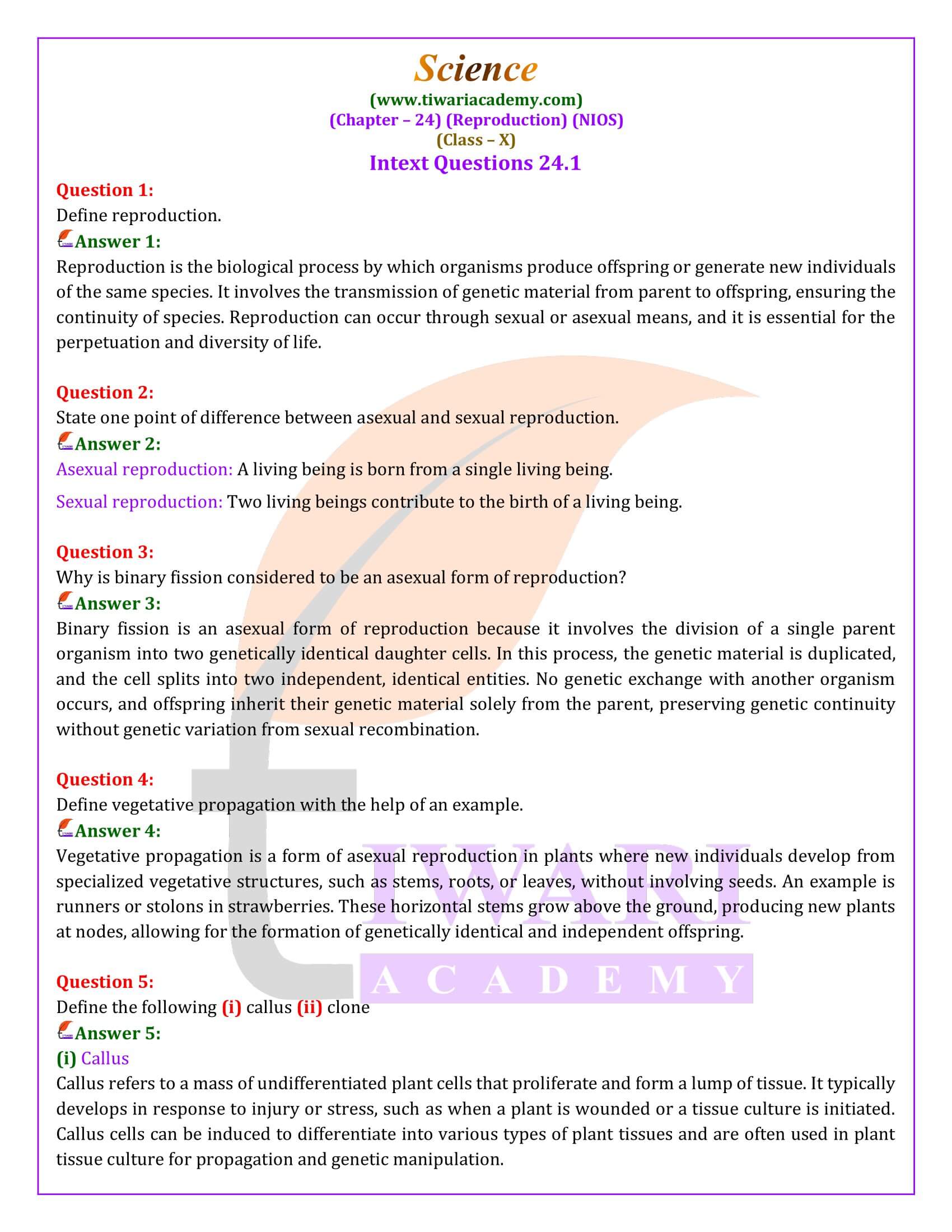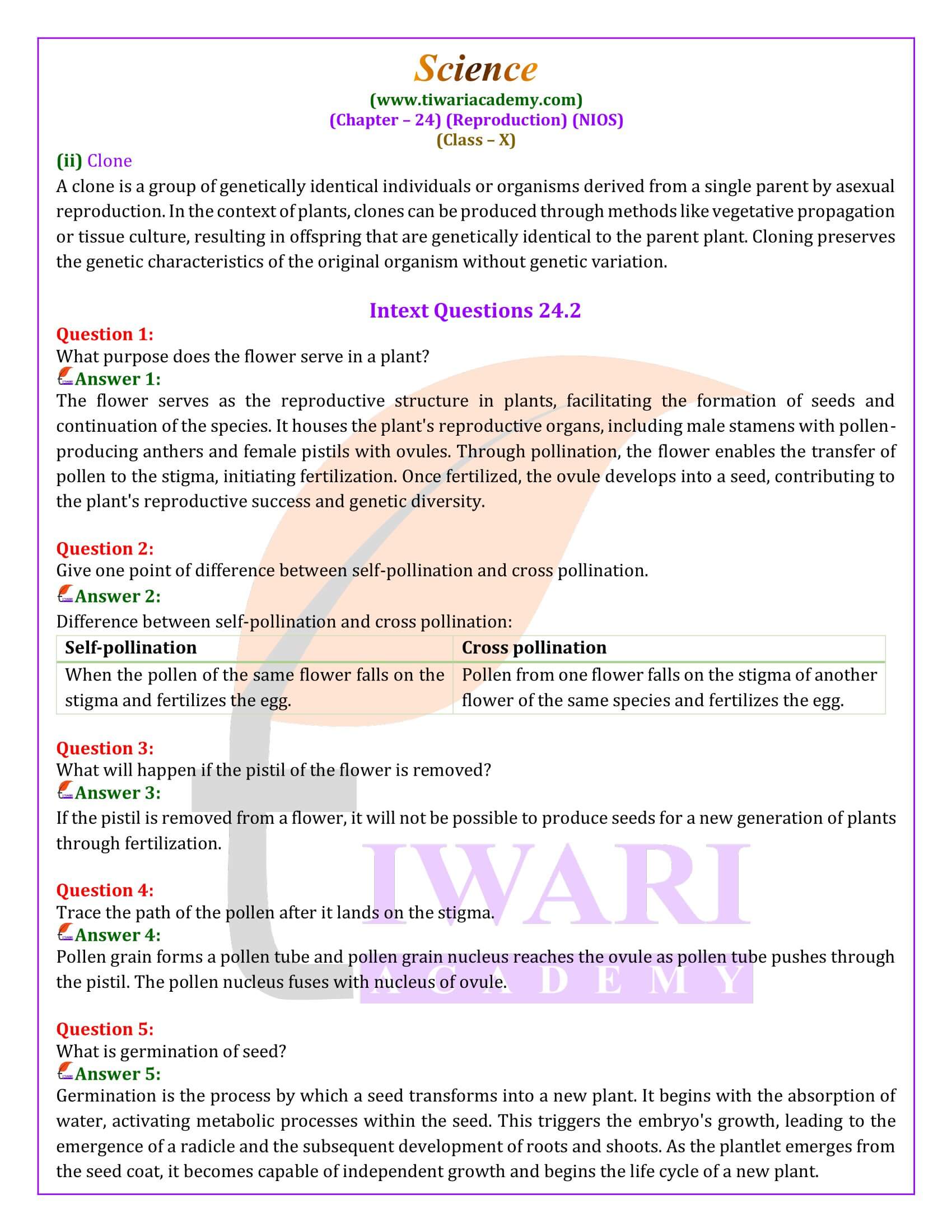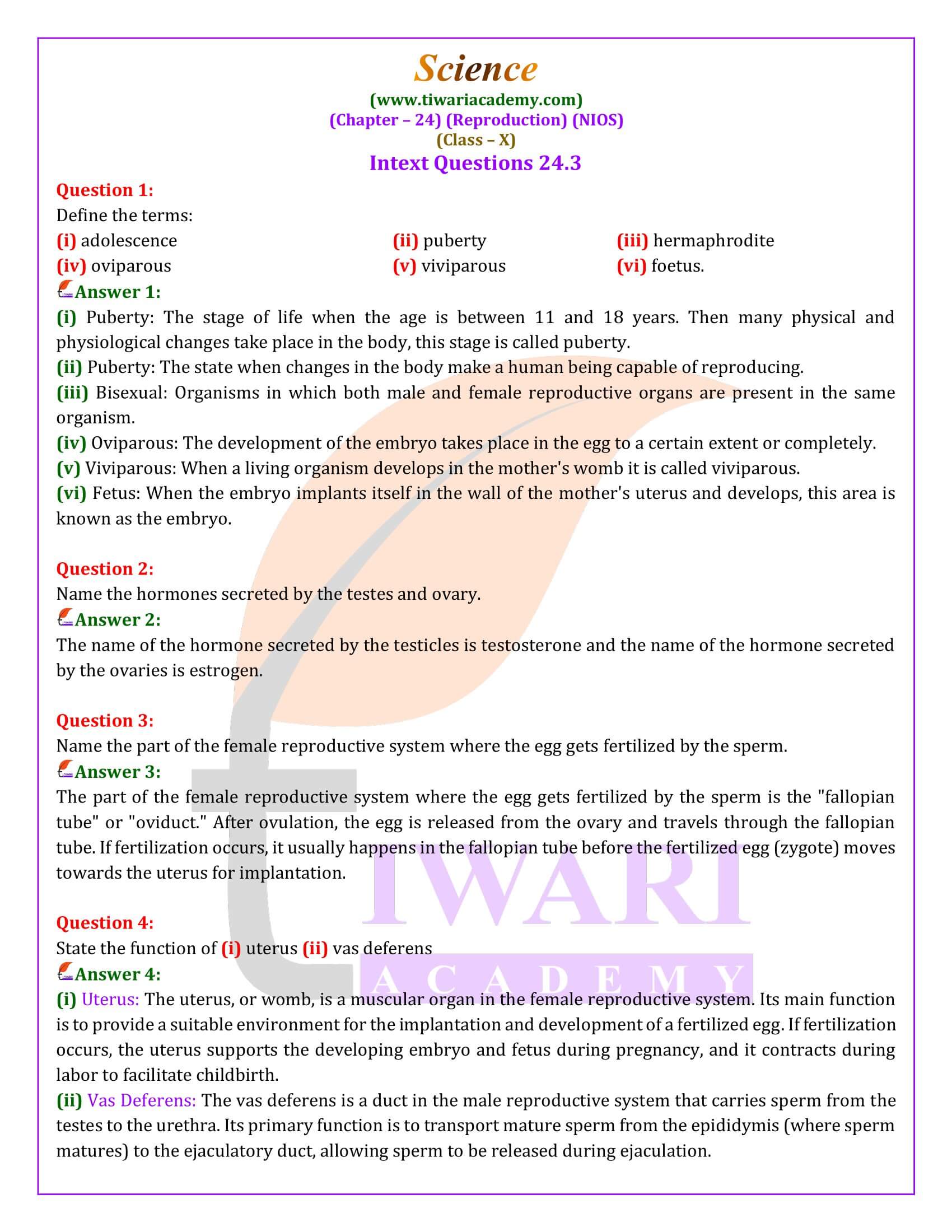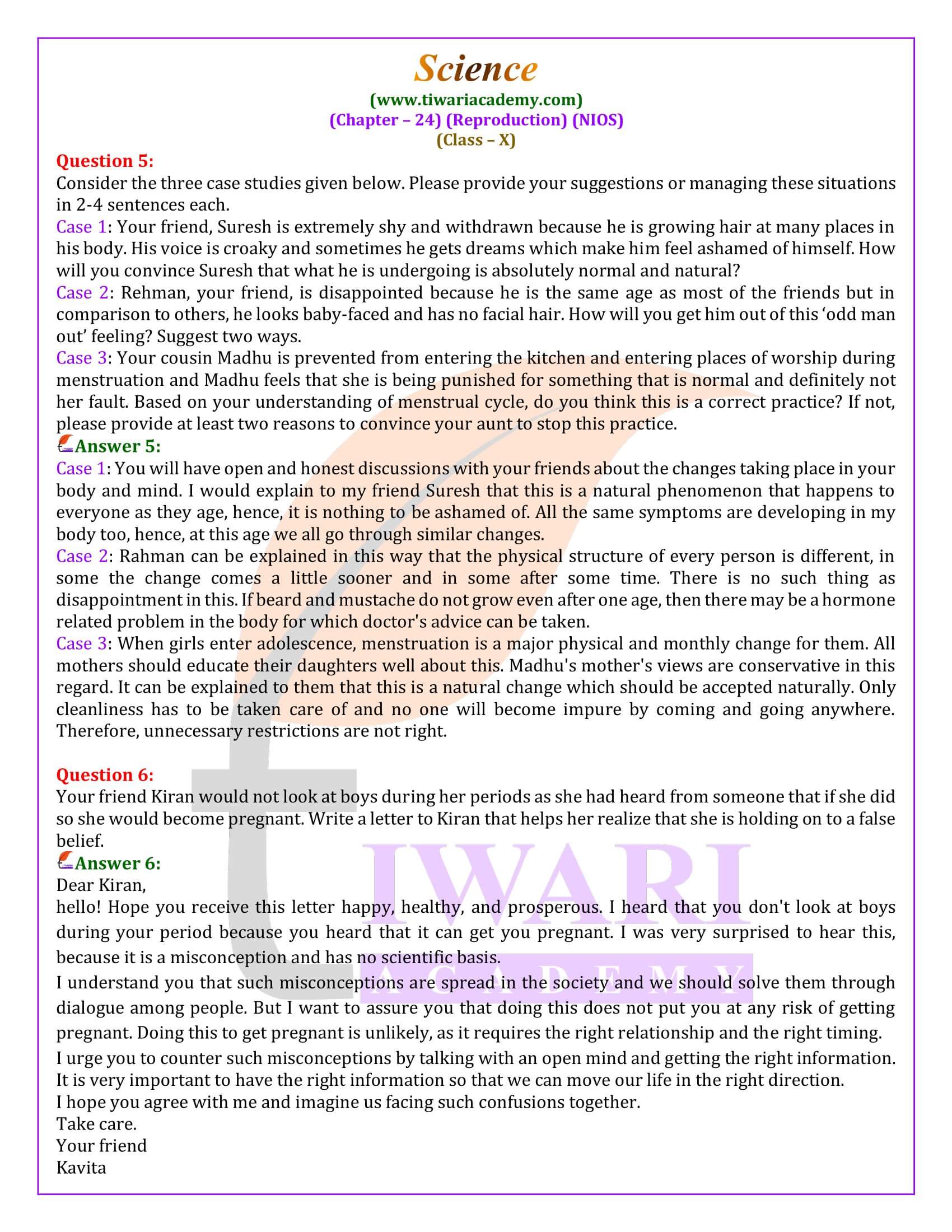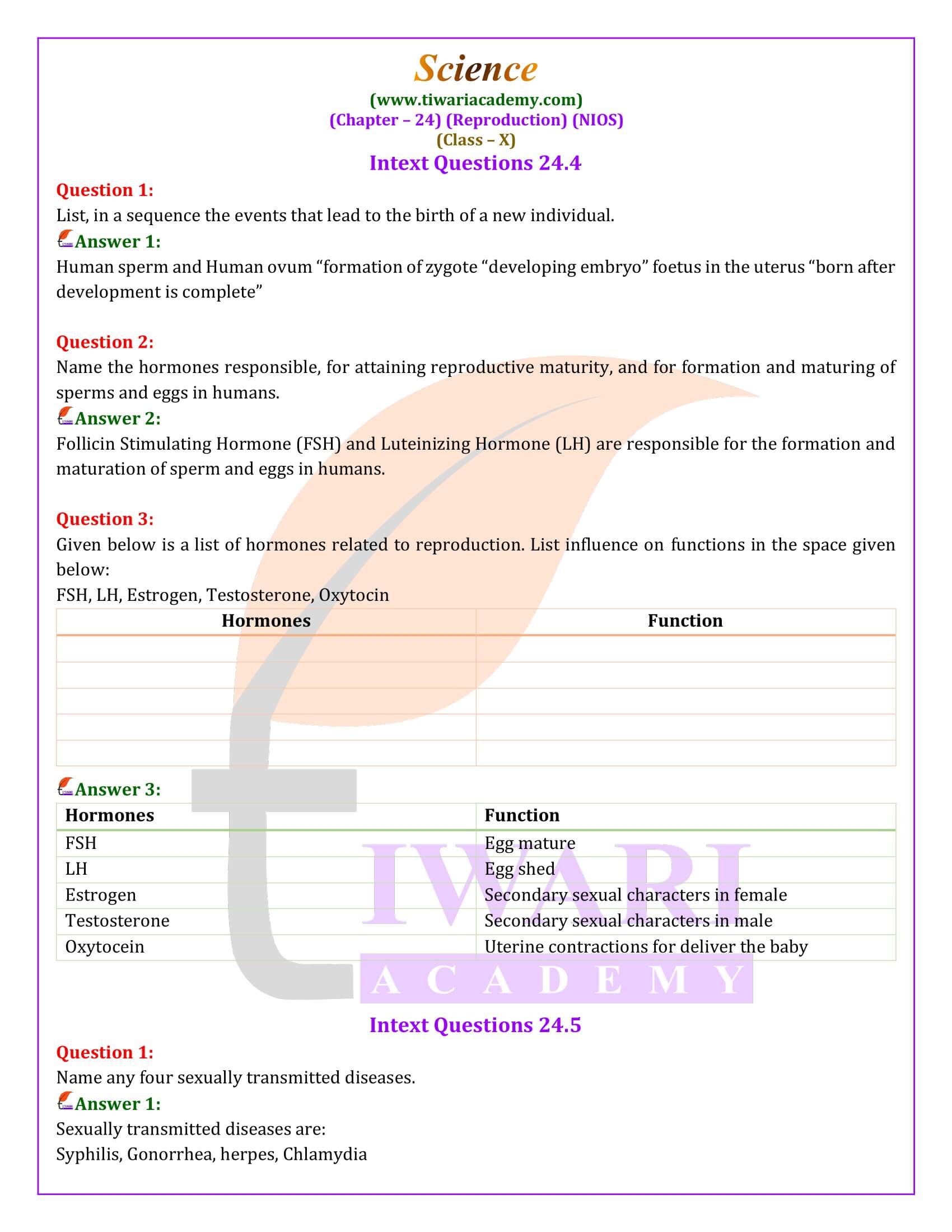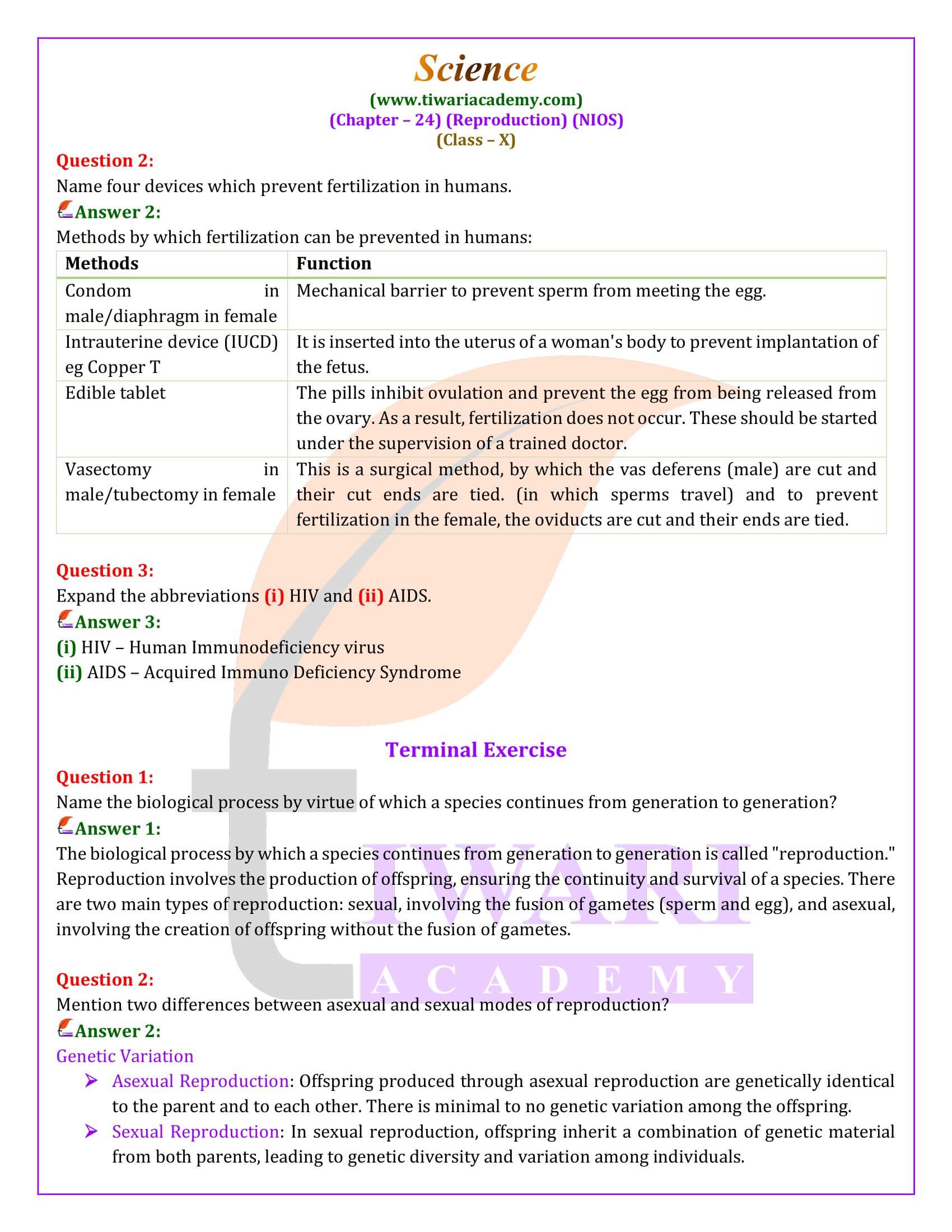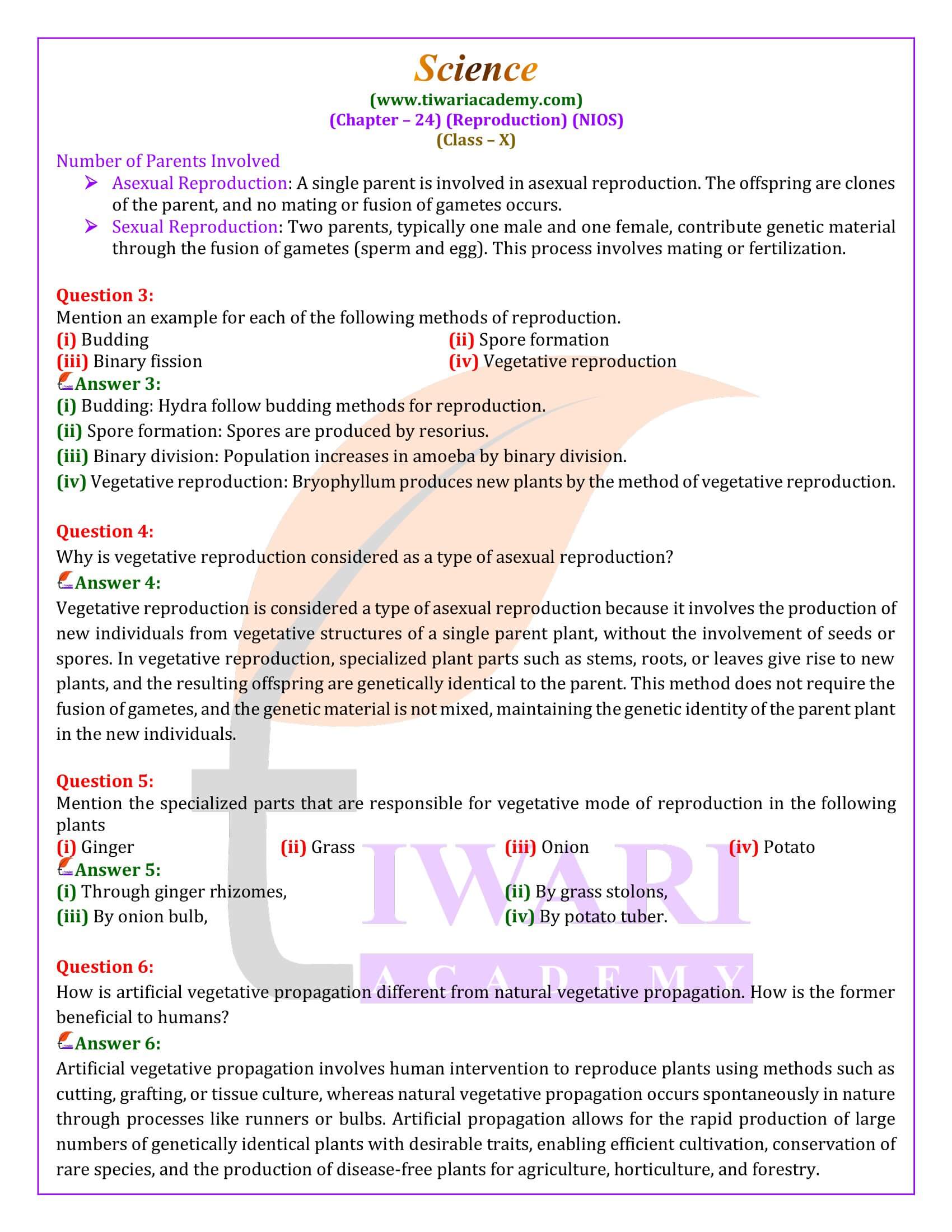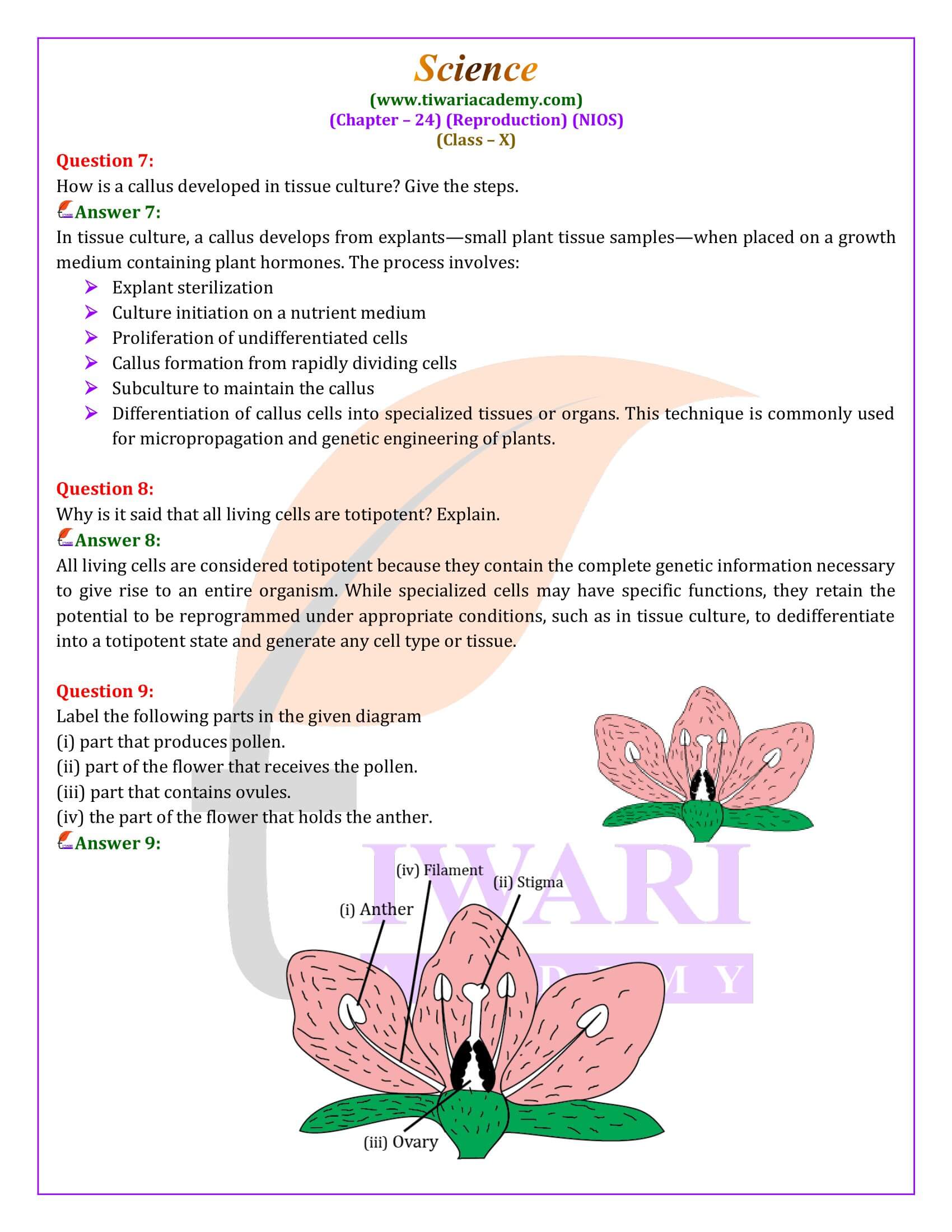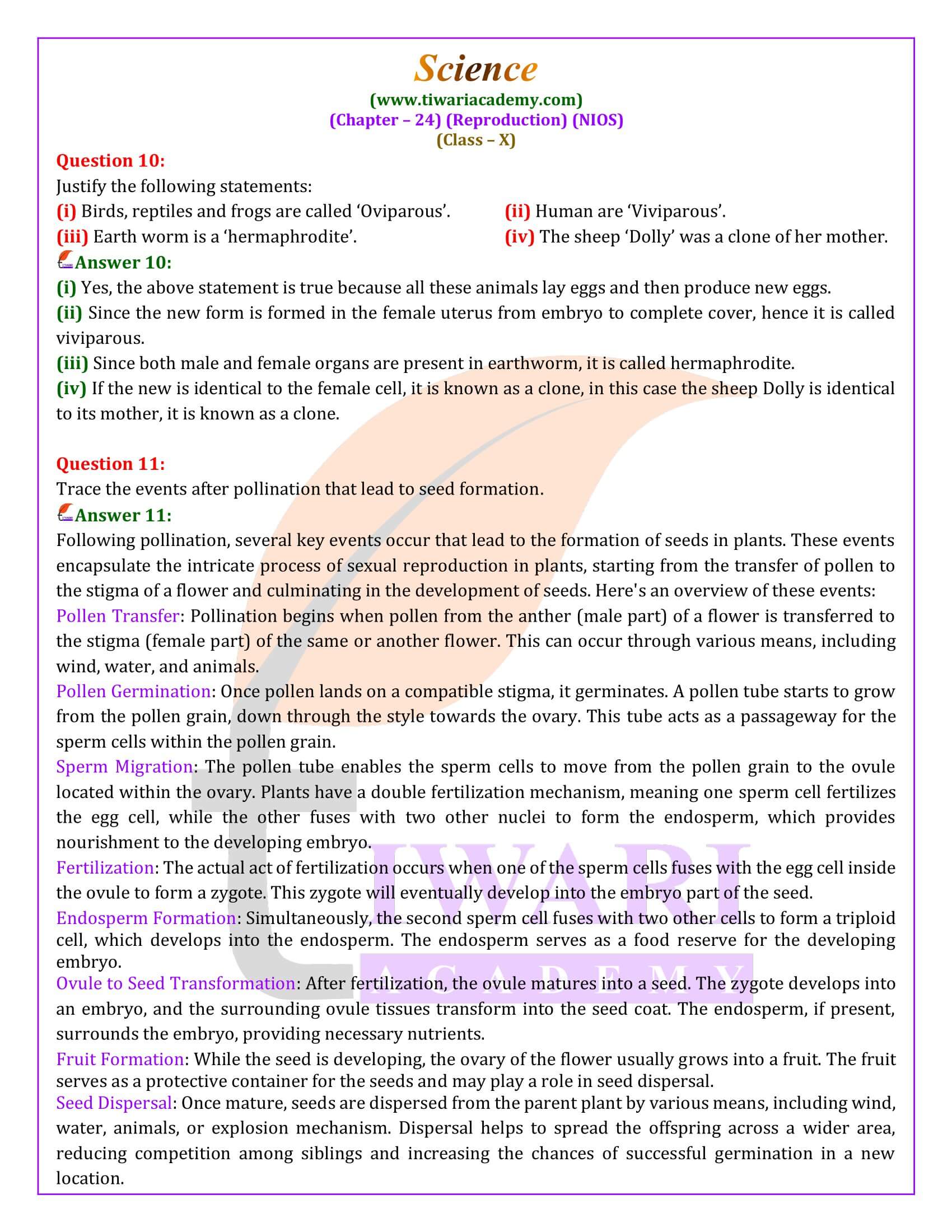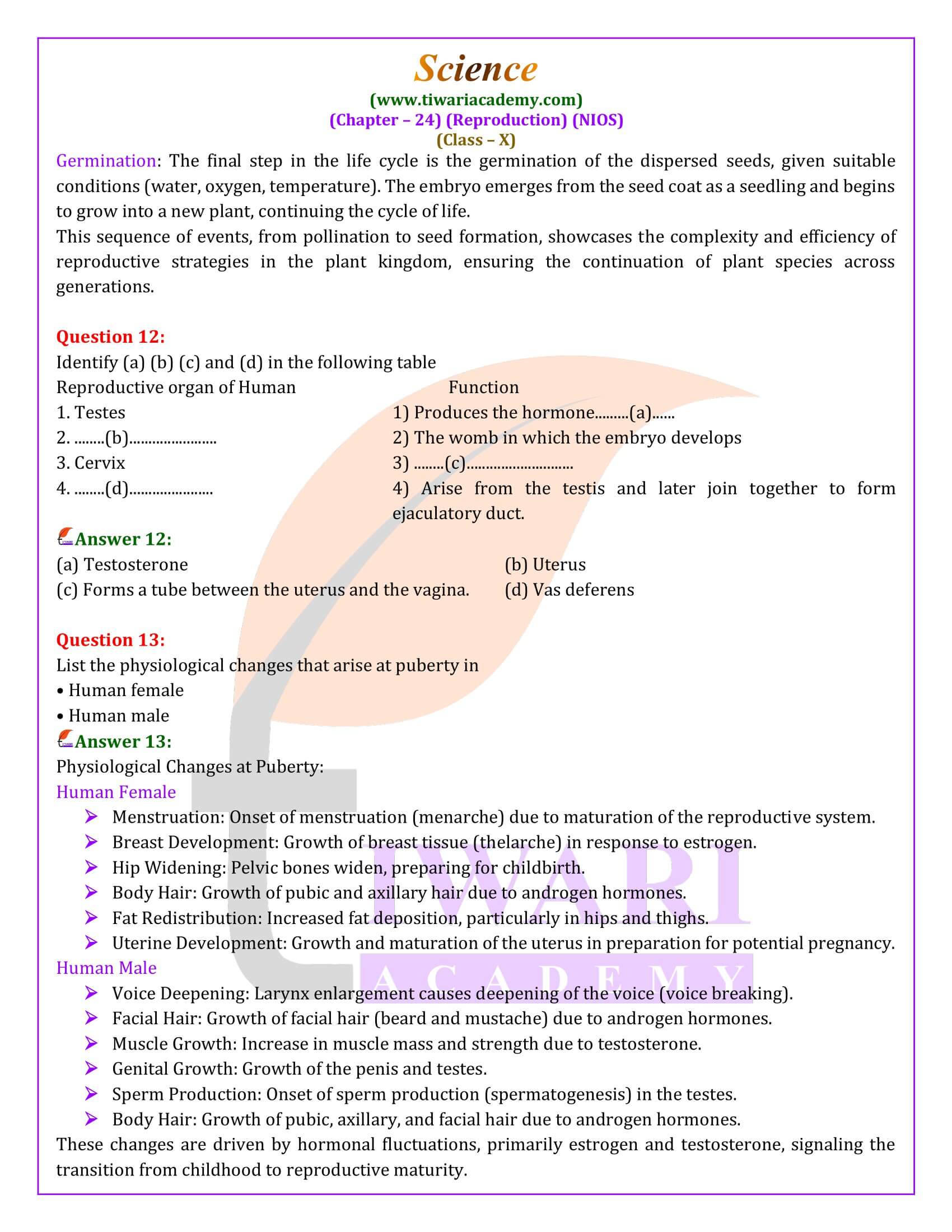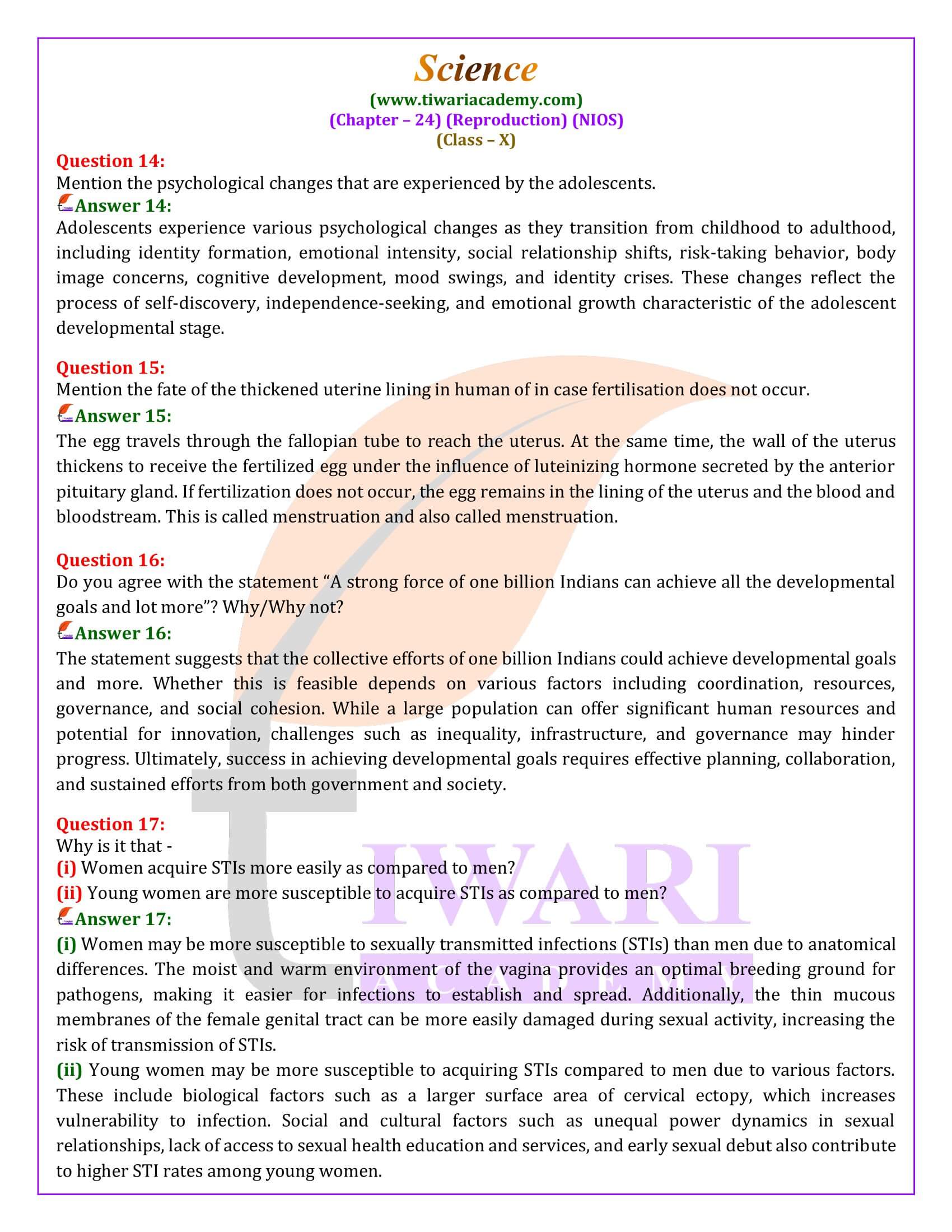NIOS Class 10 Science Chapter 24 Life Processes III: Reproduction in Hindi and English Medium updated for new academic session 2025-26. Get the complete Question Answers of NIOS Class 10 Science Chapter 24 with intext questions and exercises.
NIOS Class 10 Science Chapter 24 Life Processes III: Reproduction
Life Processes III: Reproduction
Reproduction stands as a fundamental biological process, essential for the continuation of life across generations. NIOS Class 10 Science Chapter 24 from the provided PDF seeks into the mechanisms and importance of both asexual and sexual reproduction, covering a broad spectrum of organisms from simple protozoa to complex mammals like humans.
Asexual vs. Sexual Reproduction
NIOS Class 10 Science Chapter 24 begins by setting the stage with an exploration of reproduction as a critical life process. It outlines that all living beings, from microscopic bacteria to large mammals, engage in reproduction to ensure the survival of their species. The text distinguishes between two primary modes of reproduction: asexual and sexual. Asexual reproduction, characterized by the production of offspring from a single organism, is common in bacteria, protozoa, and some plants. This mode includes mechanisms like binary fission, budding, and spore formation, allowing for rapid and efficient increase in numbers without the need for a mate.
In contrast, sexual reproduction involves the fusion of male and female gametes, leading to genetically diverse offspring. This diversity is crucial for the adaptability and survival of species in changing environments. The text provides detailed insights into the reproductive systems of flowering plants and animals, emphasizing the complexity and coordination required in these processes.
Human Reproduction: From Puberty to Parenthood
A significant portion of NIOS 10th Science Chapter 24 is dedicated to human reproduction, discussing the anatomical and physiological changes that occur from puberty to adulthood. It covers the development of reproductive organs, the menstrual cycle, and the process of fertilization and embryonic development in detail. Special attention is given to the psychological and societal aspects of human reproduction, including reproductive health and hygiene, the prevention of sexually transmitted diseases (STDs), and the societal impacts of adolescent pregnancies.
The chapter 24 of 10th Science explores the concept of reproductive health, advocating for informed choices and responsible behaviors. It stresses the importance of education in managing reproductive health, preventing STDs, and making informed decisions about family planning.
Technological and Ethical Considerations
In addition to natural reproductive processes, NIOS Class 10 Science Chapter 24 touches on modern reproductive technologies such as cloning and tissue culture. The famous example of Dolly the sheep illustrates cloning, while discussions on micropropagation highlight how tissue culture is used to propagate plants efficiently.
Ethical considerations are woven throughout the discussion, especially in the context of human reproductive technologies and interventions. The text encourages a balanced view, considering both the scientific possibilities and the ethical dilemmas they pose.
Reproductive Challenges and Solutions
NIOS 10th Science Chapter 24 concludes with a look at global and societal challenges related to reproduction, such as population growth, reproductive rights, and access to healthcare. It calls for comprehensive education and community engagement to address these issues effectively.
NIOS Class 10 Science Chapter 24 provides a thorough overview of reproduction across different life forms, emphasizing its complexity and centrality to life on Earth. It blends detailed scientific information with discussions on health, ethics, and society, offering a holistic view of how reproduction shapes the living world.
